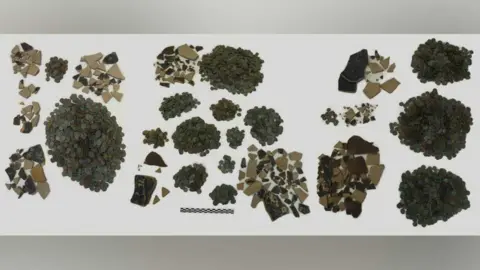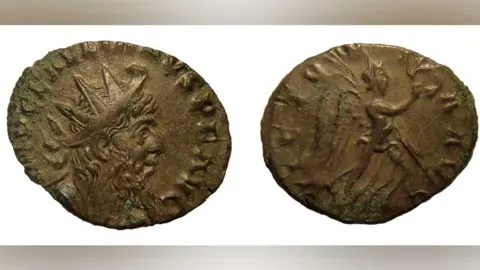St Ives museum displays 'muddy hoard' of 9,000 Roman coins
 British Museum
British MuseumA cache of more than 9,000 Roman coins nicknamed "the muddy hoard" by experts has gone on display at a museum.
It was found by a metal detectorist near Huntingdon, Cambridgeshire, and declared treasure in 2021.
They were discovered in two pottery containers, nested inside each other "a bit like Russian dolls".
Claire Hardy, director of the Norris Museum, St Ives, said "it is by far the most significant acquisition" every made by the museum.
 British Museum
British MuseumAll the coins were made of base metal and were probably hidden at a time of turmoil in the wake of the 3rd Century breakaway empire.
Ms Hardy said they range "across the reign of 14 Emperors and 1 Empress and include a previously unrecorded coin - a denarius of Emperor Tetricus I".
The county's finds liaison officer Helen Fowler spent two days excavating the hoard in 2018, with the British Museum's Dr Andrew Brown.
It had originally been hidden in two pottery containers, "one nested directly inside the other, a bit like Russian dolls", she said.
 British Museum
British Museum Ms Hardy said: "Given the quantity, composition and quality of some of the coins, it could be counted as being one of the ten most significant Roman coin hoards yet found in the UK."
She added it was "the largest coin hoard ever found in Cambridgeshire".
The exhibition will run for six months, while the museum fundraises for its permanent display.

Follow East of England news on Facebook, Instagram and X. Got a story? Email [email protected] or WhatsApp us on 0800 169 1830
